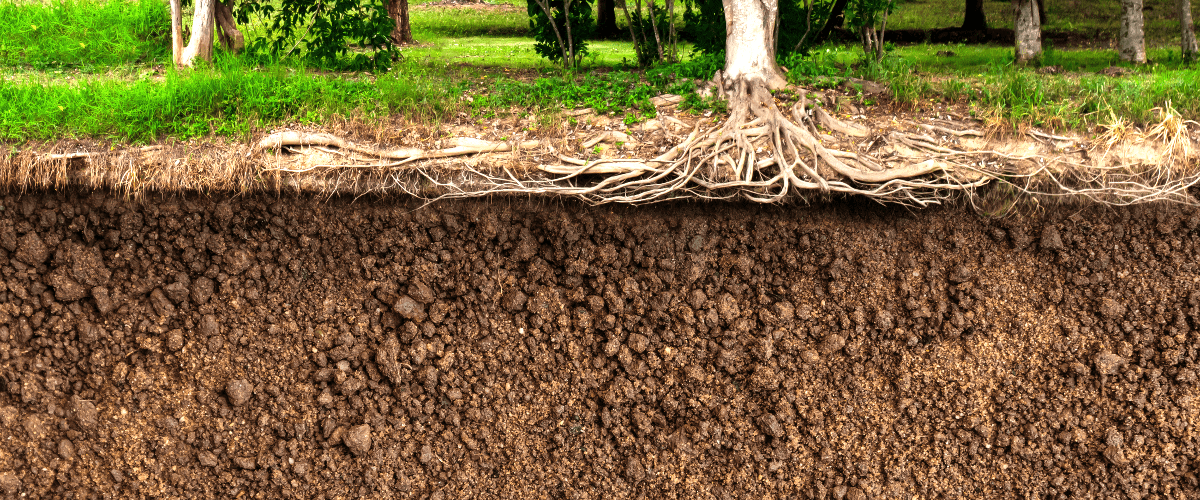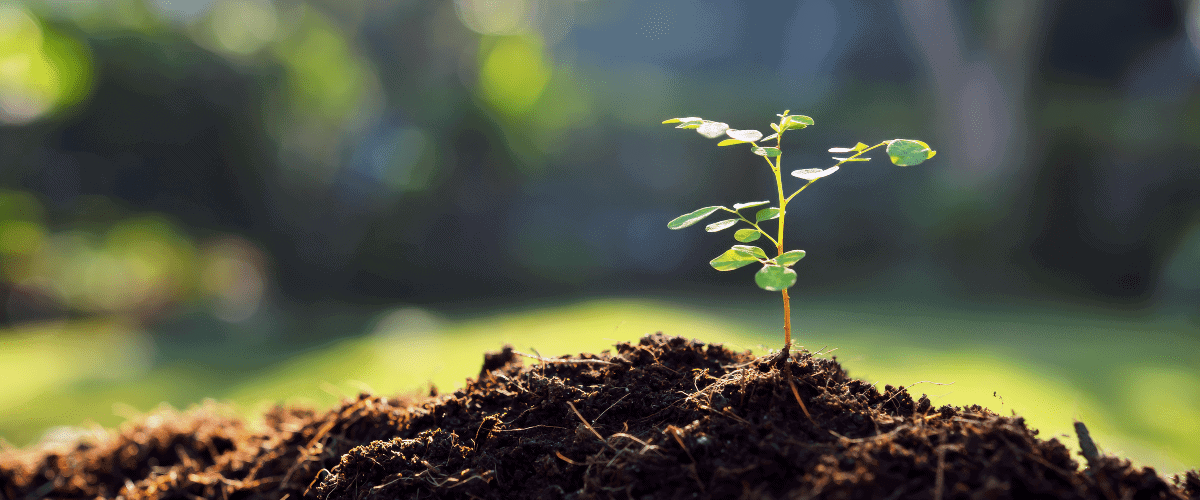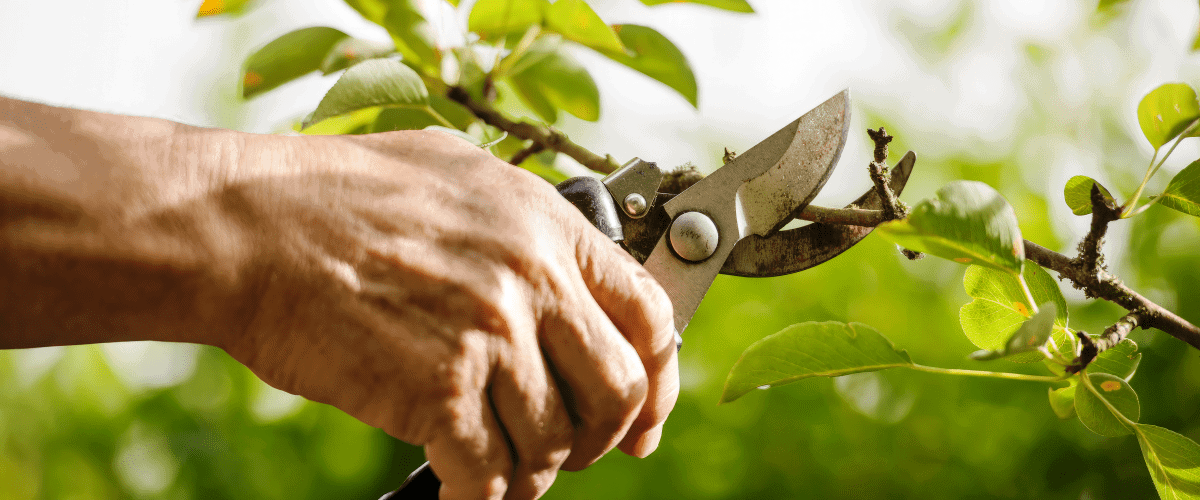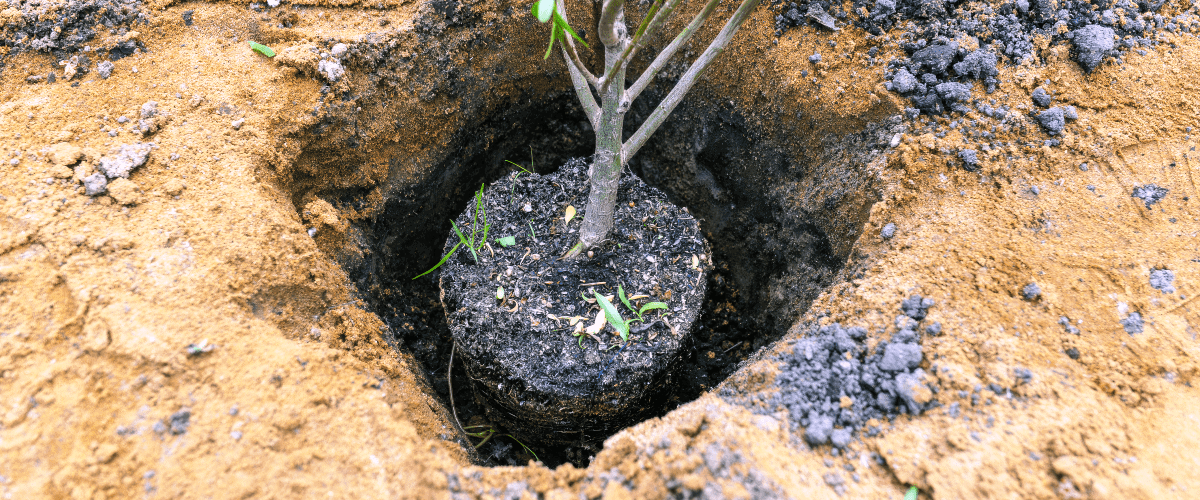
Viva Trees
Get a FREE professional tree service estimate from Viva Trees - one of the most trusted tree companies in the U.S.
OR CALL
Get a Free Estimate
Every project starts with a free tree service estimate. Enter your details to get started.

Get a FREE professional tree service estimate from Viva Trees - one of the most trusted tree companies in the U.S.
OR CALL
Every project starts with a free tree service estimate. Enter your details to get started.

The role of trees in soil conservation and erosion control is essential yet often overlooked. Trees are an integral part of our environment, providing various services such as food, shelter, and air quality improvement; however, their ability to slow down water runoff and improve soil retention should not be underestimated.
This article will explore the vital role of trees in protecting our precious soils from degradation due to extreme weather events or long-term accumulation of pollutants.
Soil erosion can have devastating consequences for both people and the planet – it degrades land quality, reduces crop yields, increases flooding risks, and destroys habitats for wildlife. Thankfully, there are proactive steps we can take to reduce erosion by planting various types of vegetation along vulnerable slopes.
Planting trees strategically on sloping lands provides multiple benefits: they help capture rainfall before it has a chance to run off over the surface; they increase infiltration into the soil; they provide shade which helps prevent evaporation; and lastly, they promote root growth which further improves soil stability.
We all share responsibility when protecting our natural resources, so let’s each do our part! In this article, you’ll learn more about how we can utilize tree cover to protect against soil erosion while improving biodiversity and increasing agricultural productivity. So read on if you’re interested in learning more about how actively managing your local landscape with trees could make a real difference!
We’ve all experienced the sensation of soil slipping through our fingers or watching helplessly as a downpour washes away entire hillsides. These are consequences of erosion and poor soil conservation practices, which can devastate our environment if left unchecked. But what exactly is soil conservation? And how does erosion control fit into the picture?
Soil conservation refers to any practice that prevents or reduces the loss of topsoil from agricultural lands due to wind or water erosion. This includes terracing, contour plowing, cover cropping, and no-till farming methods.
Erosion control works with these other techniques by providing physical barriers against further soil loss. Examples include grassed waterways, sediment basins, vegetative filter strips, riparian buffers, jetties, and breakwaters.
These two strategies protect soils from degradation while preserving their structure and improving water quality in nearby streams and rivers. Soil conservation efforts also help reduce air pollution caused by dust particles suspended in high winds. The result is healthier land management practices that benefit people and wildlife alike!
Trees, with their deep roots and leafy canopies, play an integral role in soil conservation and erosion control. They create a strong anchor that helps to hold the soil together when heavy rains cause water to run off. Trees also serve as windbreaks, reducing surface runoff of topsoil caused by high winds. Their leaves slow down raindrops before they reach the ground, allowing for better absorption into the soil.
Below are three key benefits trees provide for soil conservation and erosion control:
Trees prevent further degradation of existing soils and restore degraded areas where other practices have failed or were never implemented at all, providing valuable services in preserving both land resources and water quality within watersheds across the globe.

Planting trees is like a double-edged sword regarding soil conservation and erosion control. On the one hand, they can help prevent the topsoil from being washed away, but on the other hand, if planted incorrectly or in an unsuitable location, they can contribute to soil loss. To reap the benefits of tree planting while avoiding any negative consequences, it’s essential to choose the suitable types of trees for your needs.
Below is a table outlining various types of trees that are suited for different purposes:
| Sun-Loving Trees | Drought-Tolerant Trees | Water-Resistant Trees | Wind-Resistant Trees | Salt-Tolerant Trees | |
|---|---|---|---|---|---|
| Examples | Maple | Cedar | Oak | Pine | Juniper |
| Ideal Locations | Sunny Areas | Dry Soils | Moist/Wet Soils | Open Fields | Coastal Areas |
By selecting sun-loving trees such as maples for sunny areas, drought-tolerant cedars for dry soils, water-resistant oaks for moist/wet soils, wind-resistant pines for open fields, and salt-tolerant junipers for coastal regions, you will ensure optimal conditions for growth and stability which contributes to protecting against soil erosion.
Additionally, these trees will provide additional aesthetic value by creating green spaces and providing shade in certain areas.
Choosing the correct type of tree is essential to protect our precious topsoil and add beauty to our environment. With this knowledge in mind, we can now move on to discussing planting techniques specifically designed to prevent soil loss in mind.
Regarding soil conservation and erosion control, tree planting is an essential strategy. Trees reduce soil loss by intercepting rainfall and protecting the surface from further damage due to raindrop impact or strong winds. Several effective planting techniques can be used to control soil loss.
One common technique is terrace planting, which involves constructing a series of stepped banks at specific intervals along the slope of a hillside. These steps enable water to pool in certain areas before flowing downslope, preventing runoff and reducing the amount of sediment deposited into streams or rivers. Planting trees on these terraces also helps stabilize them against landslides or collapses caused by heavy rains.
Windbreaks are another way to protect soils from blowing away during storms. Windbreaks consist of rows of trees planted around large fields or farmland where moderate-to-high winds commonly occur.
The dense vegetation acts as a barrier that blocks wind speeds and reduces its erosive effects on soils near the protected area. By using this method, farmers can prevent their crops from becoming damaged while conserving valuable topsoil in their fields.
Tree roots offer additional benefits in maintaining soil structure since they help bind particles together while adding organic matter to existing soils through decomposition processes such as humification.
In addition, root systems act like sponges that absorb excess moisture to regulate local hydrological cycles and provide a habitat for beneficial microorganisms vital for healthy ecosystems. With all these benefits trees offer, it’s easy to see why proper planting techniques play an essential role in preserving our precious natural resources for future generations.
Transition: To understand how crucial trees are for sustaining our environment, we must look at the role of their roots in maintaining soil structure
Trees play a crucial role in soil conservation and erosion control, acting like sentinels of nature to protect the land from harm. Their root systems can be considered anchors that keep soils stable even during heavy rains or flooding, preventing them from washing away and causing extensive damage. The following points demonstrate how tree roots help preserve healthy soil:
The importance of trees in preserving healthy soils cannot be understated; their ability to hold onto precious topsoil while maintaining proper hydrological balance has an immense impact on downstream water quality.
With this knowledge, we can discuss how these benefits are utilized worldwide to combat soil loss and protect our environment from further destruction.

Trees are essential in soil conservation and erosion control, significantly impacting water quality. Root systems stabilize the soil, preventing surface runoff that often carries sediment into rivers or lakes.
Trees also act as “sponges,” absorbing excess rainfall before it has time to run off. This reduces flooding risks while improving water quality by filtering out pollutants such as nitrogen and phosphorus from entering into waterways.
| Impact | Benefits |
|---|---|
| Soil Conservation | Reduced soil loss |
| Erosion Control | Prevents surface runoff |
| Tree Planting | Filters out pollutants |
| Water Quality | It improves water quality & prevents flooding |
The benefits of trees for soil conservation, erosion control, tree planting, and water quality are undeniable. Planting trees can help reduce soil erosion due to wind, rain, or construction activities; lessen the effects of floods and landslides; protect groundwater sources; filter air pollution; provide shade and cooling during hot summer months; create habitats for wildlife species; improve overall watershed health; increase property values; conserve energy resources through shading buildings and roads; and reduce noise levels near highways or other areas prone to excessive sound waves.
Not only do trees help preserve our environment, but they can also offer a great aesthetic value to any space – making them all-around beneficial additions! With these remarkable advantages in mind, it is clear how incorporating trees into our urban landscapes is essential to ensure healthy ecosystems for generations to come. By understanding their various impacts on water quality, we can begin to strategize solutions that maximize their positive contributions even further.
Trees are practically miraculous regarding soil conservation and erosion control; they can transform an otherwise barren landscape into a lush, thriving ecosystem almost overnight. With the right strategies in place, these incredible gifts of nature can be fully leveraged for maximum impact on soil structure, water quality, and much more.
To begin with, strategic tree planting is essential for conserving soils and controlling erosion. Trees hold the soil together by their roots while providing shade from heavy rain or winds that could cause damage.
Planting trees along slopes can help slow runoff, reducing waterway sediment loss. When selecting appropriate species of trees for specific sites, local experts should always be consulted to ensure success.
In addition to strategically placing them around areas prone to runoff or strong wind gusts, mulching, and watering are crucial to ensuring the healthy growth of newly planted trees.
Mulch protects root systems from extreme temperatures and helps retain moisture in the ground. Regularly watering young saplings during dry spells allows them to establish a deep root system to prepare them for harsher conditions later on better.
These simple yet effective tactics go a long way toward ensuring our forests remain robust and resilient for future generations – all thanks to the power of trees! Taking advantage of these resources can yield tremendous benefits not only for us but for Mother Nature too.
Now let’s focus on understanding some of the challenges associated with tree planting for soil conservation and erosion control purposes…

Tree planting is vital for soil conservation and erosion control, but the process can be challenging. These include:
To protect against these potential issues, it’s necessary to have legal protection in place that ensures proper practices are followed when it comes to tree planting for soil conservation and erosion control purposes. This will help ensure success while avoiding costly mistakes along the way.
There is an increasing need for legal protection of tree planting practices that help with soil conservation and erosion control. Laws are enacted in the United States to protect these trees from destruction while incentivizing people to plant more trees.
On a global scale, countries worldwide have adopted various tree conservation laws to protect existing forests and encourage new tree-planting initiatives.
At the local level, many communities have implemented their own rules governing tree-planting activities. In some cases, this may include restrictions on cutting down mature trees or penalties for not replanting after harvesting timber.
Additionally, tax credits may be available for residents who engage in reforestation efforts or other measures designed to promote soil conservation and erosion control.
Overall, it is clear that governments across the globe are taking steps to ensure that tree-planting practices remain protected by law to preserve our soils for future generations. Through carefully implementing legislation such as tree conservation and soil erosion laws, we can create a sustainable environment that benefits all life forms on earth.
It is time to research how trees can be used effectively to conserve our precious resources and prevent future soil loss due to erosion.
Recent research has revealed the vital role of trees in soil conservation and erosion control. Planting trees on slopes can help to reduce runoff and prevent sediment from entering streams, rivers, lakes, or other bodies of water.
Trees also intercept rainfall with their branches and bark, allowing more time for infiltration into the ground, reducing surface runoff, and slowing down soil erosion. Additionally, tree roots bind together soil particles while increasing porosity, improving the stability of soils against erosive forces such as wind and rain.
| Benefits | Research Results | Implications |
|---|---|---|
| Soil Conservation | Reduced water runoff Slowed down soil erosion | Protects downstream habitats Preserves nearby watersheds Maintains water quality |
| Erosion Control | Intercepted rainfall Improved soil structure & porosity | Avoided flooding events Lowered risk of landslides Prevented loss of topsoil |
| Tree Planting | Increased root binding | Enhanced slope stabilization Supported vegetation growth Strengthened ecosystem resilience |
The findings suggest that tree planting is a practical approach to preserving our natural environment by protecting it from potential damage caused by erosion and pollution. Moreover, these benefits are not limited to just one region; they apply everywhere where there is a need for improved land management practices due to environmental degradation caused by human activities such as farming or deforestation.
As we continue to make progress in understanding how plants can improve our ecosystems, it becomes increasingly clear why investing in sustainable forestry strategies is essential for maintaining healthy environments now and in the future.
Regarding soil conservation and erosion control, tree planting is the most widely recognized solution. However, several additional techniques can be used in addition to or alongside this approach for maximum effect. These include water harvesting, slope stabilization, terrace construction, increasing vegetation cover, and applying soil amendments.
Water harvesting involves collecting rainwater from rooftops to use later on plants during dry periods. This method helps retain soil moisture by reducing runoff losses and replenishing aquifers with fresh groundwater.
Slope stabilization requires building structures such as retaining walls or gabion baskets along hillsides to prevent landslides caused by erosive forces like heavy rains or strong winds. Terraces constructed around slopes reduce surface run-off and help increase soil organic matter levels, improving land fertility.
Increasing the amount of vegetation cover over an area also has many advantages in maintaining healthy soils and preventing further erosion. Plants protect against wind and water damage while their roots hold onto topsoil by forming a protective matting beneath them.
Adding nutrient-rich composts or other soil amendments can improve physical structure allowing better water infiltration into deeper layers, thus increasing the overall productivity of lands affected by soil degradation processes due to erosion.
These methods all work together to promote soil conservation and protect against erosion if appropriately implemented according to local conditions. While they may require more effort than simply planting trees, these additional solutions offer numerous benefits that make them well worth considering when attempting to restore degraded areas into productive ones.
Soil conservation and erosion control are two of our planet’s most critical environmental issues. With human activities such as deforestation, urbanization, and industrial development altering natural ecosystems, we must proactively protect our soil resources.
Fortunately, there are plenty of ways that individuals can support these efforts through public involvement initiatives and environmental education campaigns.
People can get involved with soil conservation and erosion control by raising awareness about these critical topics. People can start conversations about why these efforts are essential in their community or online.
Additionally, they can spread information on social media platforms or create educational materials, like presentations or videos explaining how everyone can contribute to protecting our soils from further degradation.
Participating in community planting programs is another excellent way for public members to make a difference in soil conservation and erosion control. These programs work towards preserving local flora while also fighting against land degradation caused by overgrazing, water runoff, wind erosion, and other man-made disturbances.
They may include:
1) Planting trees along riverbanks or other areas prone to flooding;
2) Establishing buffer zones around streams and rivers;
3) Installing terraces and windbreaks;
4) Carrying out vegetation management practices like mulching or intercropping.
These initiatives not only help reduce harmful runoffs but also improve air quality, restore habitats for wildlife species, and provide additional benefits such as food production and recreational opportunities for communities across the globe.
Furthermore, supporting organizations dedicated solely to erosion control strategies provides an even more fantastic opportunity for public participation in this pressing issue. By joining forces with local nonprofits working tirelessly to preserve our precious soils, we can ensure future generations have access to healthy environments that remain productive for years.
Monitoring the success of tree planting for soil conservation and erosion control can be tricky. It involves understanding how to measure progress to determine whether or not the efforts are successful. Fortunately, several methods can be used to monitor the effectiveness of these initiatives.
Soil conservation monitoring focuses on observing changes in land use and soil quality over time. This includes measuring water retention, nutrient levels, soil structure, and fertility. By tracking these metrics regularly, it is possible to identify trends in soil health that can indicate whether or not conservation measures have been effective.
Similarly, erosion control monitoring looks at changes in topography caused by wind or water-based erosion processes like runoff and landslides. Evaluation of sediment accumulation rates helps us understand if our efforts are helping prevent further landscape degradation.
Other indicators such as species diversity, canopy cover, tree growth rate, and pest management practices are also essential when assessing tree planting success. Allowing trees to establish healthy root systems and providing proper care will help them thrive in their environment long term and contribute positively to soil conservation and erosion control objectives.
Ultimately, regular monitoring with an appropriate combination of techniques allows us to understand better our actions’ impact on preserving and protecting soils against degradation over time – a key factor for sustaining life on Earth!
How long do trees typically take to become established and begin providing soil conservation and erosion control benefits? This is an essential question for anyone considering planting trees to protect the surrounding environment from degradation. Tree establishment can be lengthy, but it provides numerous environmental benefits worth waiting for once complete.
When planting trees, there is no one-size-fits-all answer regarding how much time they will take to become properly established. Generally, most tree species require two to six years before offering soil conservation and erosion control advantages.
The exact timeline depends on several factors, including the type of tree being planted and climate conditions in the area where the trees are located.
Many strategies exist that can help accelerate successful tree establishment and ensure faster uptake of soil conservation and erosion control properties. For example, mulching around newly planted saplings helps retain moisture while blocking weeds from competing with young roots for water and nutrients.
Proper irrigation during dry periods is equally essential if you want your trees to reach maturity quickly to protect against wind or water damage caused by erosive forces.
Considering all these considerations, planning is vital to maximizing your chances of success when planting trees as part of soil conservation efforts or practicing erosion control techniques. With some patience and dedication, you should soon see tangible results from your hard work!
The saying goes, “The best time to plant a tree was 20 years ago. The second best time is now.” This adage is an essential reminder of trees’ vital role in soil conservation and erosion control. When planting trees for these purposes, specific regulations must be observed by those responsible for their care and maintenance.
To ensure successful conservation efforts, it is essential to understand what specific regulations apply to tree planting initiatives. Depending on the locality or state, soil conservation regulations may include restrictions on public support, tree planting requirements, and protection against erosion control degradation.
Other considerations would include allowing enough space between seedlings so they can receive adequate sunlight while also preventing overcrowding; ensuring good drainage; and selecting species appropriate for local conditions such as climate, water availability, pollution levels, etc.
Besides these basic rules, organizations should seek expert advice from arborists regarding pruning techniques during the establishment phase and other relevant matters about properly managing newly planted trees.
Additionally, if required by law or local ordinances, permits must be obtained before beginning any alteration to existing vegetation or building structures near where the trees will be planted.
It is clear that when considering how long trees take to become established and provide necessary benefits for soil conservation and erosion control – adherence to relevant laws is an integral part of this process:
In conclusion, tree planting is essential to soil conservation and erosion control efforts. Trees can take up to three years to establish, but the environmental benefits are worth waiting for. Proper regulations must be followed when planting trees to ensure their success.
Other techniques, such as terracing or contour farming, should be used alongside tree planting for maximum benefit. The public also has a role to play by supporting organizations that promote soil conservation and erosion control.
After all, we must remember we’re only borrowing this land from future generations; thus, it’s our duty now to do everything we can so they don’t have to suffer the consequences of our negligence down the line.
If you liked this blog, check out our other tree care and maintenance articles on: